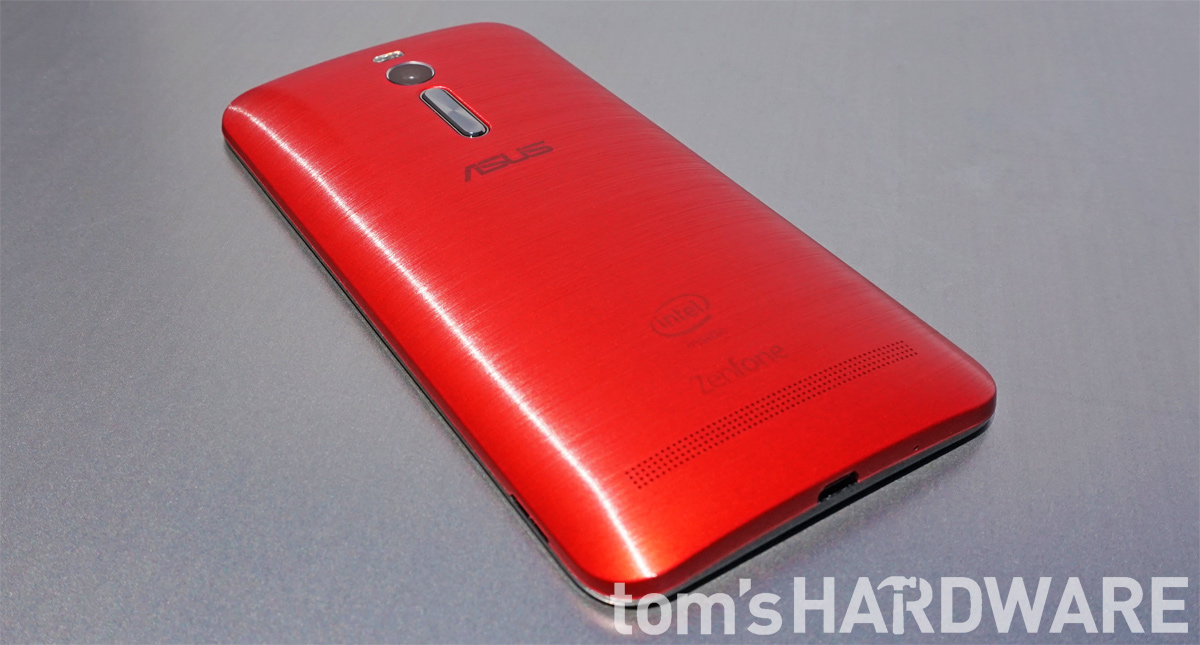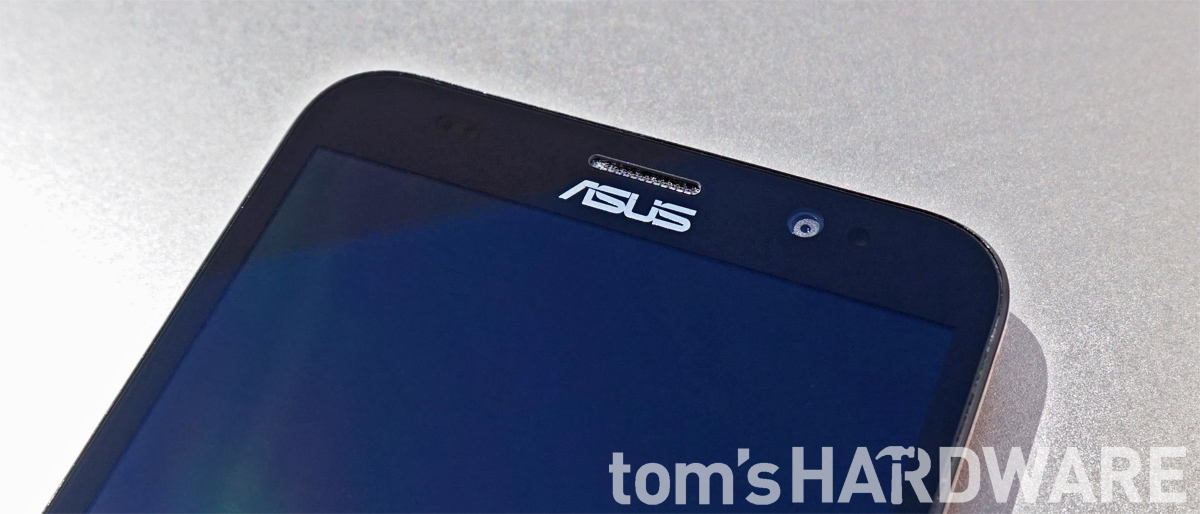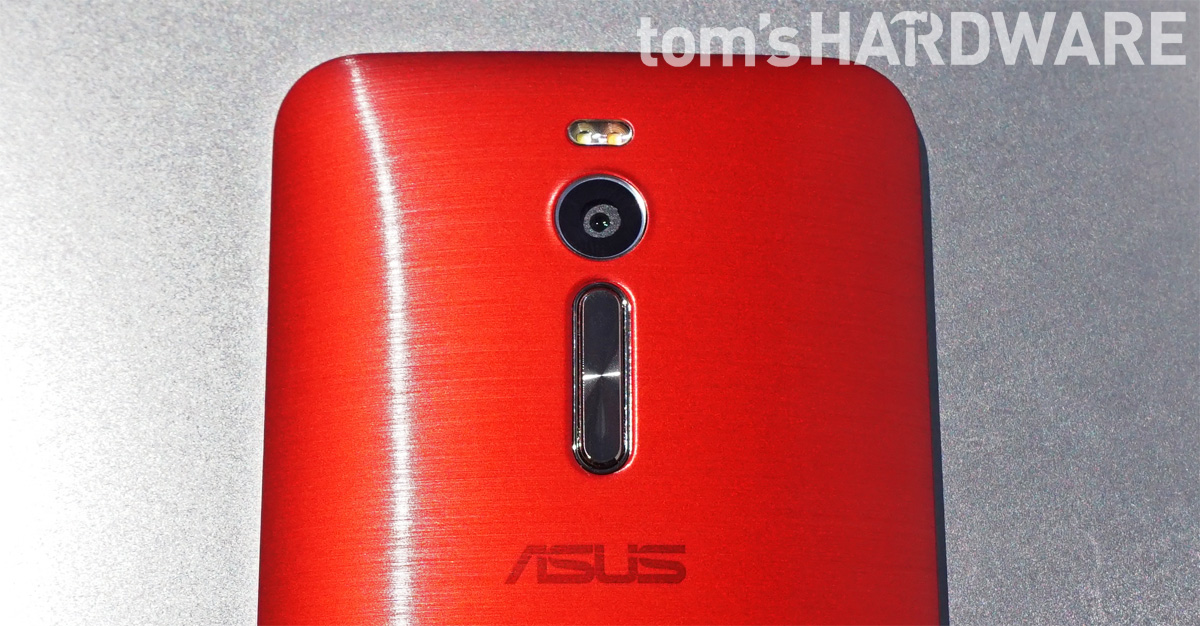Asus ZenFone 2 Review
Asus’ 5.5-inch smartphone comes with an Intel processor and 4GB of RAM. Will its PC-like approach to creating smartphones leave you in a Zen-like state?
Why you can trust Tom's Hardware
Conclusion
Designing a phone for the middle of the market is tough. A flagship device gets all the bells and whistles, while a low-end device gets the bare minimum to hit its target price. In the middle, however, the OEM needs to find just the right balance between design, features, performance, and price. Fall short in just one area and the phone is a flop. For the ZenFone 2, Asus finds this balance. Performing better and costing less than its peers offsets the few minor issues we found with ergonomics and the display.
Despite its low cost and all-plastic construction, the ZenFone 2 does not feel or look cheap. The faux brushed metallic finish looks convincing and the body feels rigid and sturdy. The only rough edge, literally, is around the perimeter of the front face, which feels scratchy when held against the ear.
We do have some minor quibbles about ergonomics. Asus places the volume controls on the back and the power button on the top edge. While this gives it a streamlined look and reduces inadvertent button presses, the power button is very difficult to reach considering how tall the phone is. This issue is mostly mitigated, however, by the ability to wake or sleep the device by double tapping the screen, a feature we love and wish every phone had. The rear-mounted volume rocker is placed within easy reach, although we wish it were a bit wider and had some sort of detent in the middle to make it easier to locate. Another minor issue is that the capacitive buttons are only coated with a reflective material and are not backlit, causing us to fumble for the correct button in the dark on more than one occasion.
The ZenFone 2’s sharp looking 5.5-inch IPS LCD display sports a 1080p resolution and 401 PPI pixel density, a definite plus considering many large-screened phones in this price range only have a 720p resolution. Asus also provides a few different display modes and some manual controls for adjusting the screen’s appearance. While the factory modes are not stellar in terms of grayscale or color accuracy, a simple adjustment of the color slider improves the display accuracy significantly.
While the ZenFone 2’s display is good, there are two things holding it back from being great. The first is maximum brightness. By default, Asus caps brightness to just over 300 nits, which makes outdoor viewing more difficult. Using a third-party app to control display brightness unlocks the backlight’s full potential, boosting the display to ~400 nits, an acceptable value. The second, more serious, issue is the display’s gamma curve. Linearly increasing with luminance, the high gamma gives the screen a dark cast, washing away shadow detail and hurting color accuracy.
The 13 MP camera lacks advanced features like OIS and PDAF, which is common for phones in this price range, but it is accompanied by a dual-color LED flash. The ZenFone 2 also lacks support for Lollipop’s Camera2 API. Despite this, Asus’ streamlined camera app does have a decent manual mode and offers smart suggestions for which of the several different shooting modes to use, including a good HDR mode that not only controls dynamic range well, but also avoids the most common post-processing artifacts.
Image quality in good lighting is decent, but it tends to set the white balance a bit too cool. It also tends to overexpose images when not using HDR mode. The Toshiba rear camera sensor seems to struggle with low-light sensitivity, leading to darker images with visible noise. Asus does not appear to use any noise reduction algorithms, which makes the noise more visible, but also avoids the artifacts and loss of details that result from its overuse. The rear camera also has trouble capturing color info in lower-light conditions, making images appear a bit muted and undersaturated.
Get Tom's Hardware's best news and in-depth reviews, straight to your inbox.
Like most mid-range phones, shooting video with the ZenFone 2 is a no-frills affair. Video quality at 1080p is ok, but the lack of continuous autofocus and an HDR video mode hurts the experience. You also do not get access to any advanced video modes, including 4K, 60fps, or slow motion.
One thing about the ZenFone 2 that did surprise us is its excellent audio quality. While it does not have front-facing or even stereo speakers, its lone rear-facing speaker actually sounds pretty good. The ZenFone 2’s headphone audio quality even rivals some of the best flagships we’ve heard.
Asus’ ZenUI was another nice surprise. Sure, Asus includes quite a few of its own apps, not all of which are useful, but it’s easy enough to sweep them out of the way. Where ZenUI shines is in its flexibility. It includes a good theme engine and the launcher includes a depth of customization usually reserved for third-party ROMs. Asus’ ZenMotion suite includes useful features like the ability to launch apps by drawing letters on the screen and a nice one-handed mode too.
At the beginning of this (novel length) review, we questioned whether the ZenFone 2’s Atom SoC could compete with its ARM-based competition in terms of performance and power given Intel’s past struggles in mobile. In terms of peak theoretical performance, Intel still has a ways to go to match the best offerings from ARM and Apple. However, when it comes to more realistic workloads, Atom does fairly well. Along with decent NAND read speeds and a memory controller that performs well with random memory accesses, the Atom-powered ZenFone 2 performs as well as, or in some cases better than, more expensive flagship phones. Pairing the Atom Z3580 SoC with a 3000mAh battery gives the ZenFone 2 pretty good battery life as well. It appears that Atom can compete in the power consumption arena too.
The ZenFone 2 turns out to be a surprisingly well-rounded device considering it only costs around $300 or less unlocked. Most OEMs offering phones in this price range make serious concessions that compromise the user experience to reduce cost. Asus avoids this pitfall, creating a phone that meets (camera) or exceeds (performance and features) our expectations for a mid-range device. This is why the Asus ZenFone 2 is Editor Recommended.
MORE: All Smartphone Content
MORE: All Tablet Content



